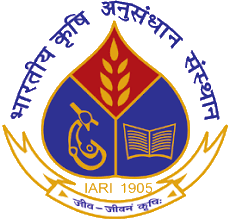| |||||
| Centuries: | |||||
|---|---|---|---|---|---|
| Decades: | |||||
| See also: | List of years in India Timeline of Indian history | ||||
Events in the year 1899 in India.
| |||||
| Centuries: | |||||
|---|---|---|---|---|---|
| Decades: | |||||
| See also: | List of years in India Timeline of Indian history | ||||
Events in the year 1899 in India.

The Indian National Congress (INC), colloquially the Congress Party or simply the Congress, is a political party in India with deep roots in most regions of India. Founded on 28 December 1885, it was the first modern nationalist movement to emerge in the British Empire in Asia and Africa. From the late 19th century, and especially after 1920, under the leadership of Mahatma Gandhi, the Congress became the principal leader of the Indian independence movement. The Congress led India to independence from the United Kingdom, and significantly influenced other anti-colonial nationalist movements in the British Empire.

George Nathaniel Curzon, 1st Marquess Curzon of Kedleston,, styled The Honourable between 1858 and 1898, then known as TheLord Curzon of Kedleston between 1898 and 1911, and TheEarl Curzon of Kedleston between 1911 and 1921, was a prominent British statesman, Conservative politician and writer who served as Viceroy of India from 1899 to 1905.
Events in the year 1947 in India. It was a very eventful year as it became independent from the British crown, resulting in the split of India and Pakistan. Many people died during partition and India became a democracy.
Events in the year 1948 in India.
Events in the year 1949 in India.
Events in the year 1946 in India.

The Indian Agricultural Research Institute (IARI), commonly known as the Pusa Institute, is India's national institute for agricultural research, education and extension. The name Pusa Institute is derived from the fact that the institute was originally located in Pusa, Bihar as the Imperial Institute of Agricultural Research in 1911. It was then renamed as the Imperial Agricultural Research Institute in 1919 and following a major earthquake in Pusa in 1934, it was relocated to Delhi in 1936. The current institute in Delhi is financed and administered by the Indian Council of Agricultural Research (ICAR). The IARI was responsible for the research leading to the "Green Revolution in India" of the 1970s. IARI ranked First among Agriculture and Allied Universities in the National Institutional Ranking Framework NIRF.
Events in the year 1939 in India.
Events in the year 1945 in India.

The Delhi Durbar was an Indian imperial-style mass assembly organized by the British at Coronation Park, Delhi, India, to mark the succession of an Emperor or Empress of India. Also known as the Imperial Durbar, it was held three times, in 1877, 1903, and 1911, at the height of the British Empire. The 1911 Durbar was the only one that a sovereign, George V, attended. The term was derived from the common Persian term durbar.
Events in the year 1936 in India.
Events in the year 1905 in India.

Independence Day is celebrated annually on 15 August as a public holiday in India commemorating the nation's independence from the United Kingdom on 15 August 1947, the day when the provisions of the Indian Independence Act, which transferred legislative sovereignty to the Indian Constituent Assembly, came into effect. India attained independence following the independence movement noted for largely non-violent resistance and civil disobedience led by Indian National Congress under the leadership of Mahatma Gandhi.
Events in the year 1919 in India.

Raj Bhavan is the official residence of the Governor of West Bengal, located in Kolkata, the capital of West Bengal. Built in 1803, it was known as Government House during the Company rule in India and the British Raj.

Amrita Bazar Patrika was one of the oldest daily newspapers in India. Originally published in Bengali script, it evolved into an English format published from Kolkata and other locations such as Cuttack, Ranchi and Allahabad. The paper discontinued its publication in 1991 after 123 years of publication. Its sister newspaper was the Bengali-language daily newspaper Jugantar, which remained in circulation from 1937 till 1991.
William Hutt Curzon Wyllie was a British Indian army officer, and later an official of the British Indian Government. Over a career spanning three decades, Curzon Wyllie rose to be a Lieutenant Colonel in the British Indian Army and occupied a number of administrative and diplomatic posts. He was the British resident to Nepal and the Princely state of Rajputana, and later, the political aide-de-camp to the Secretary of State for India, Lord George Hamilton. Curzon Wyllie was assassinated on 1 July 1909 in London by the Indian revolutionary Madan Lal Dhingra, who was a member of India House in London.
Events in the year 1904 in India.
Events in the year 1903 in India.
Events in the year 1901 in India.